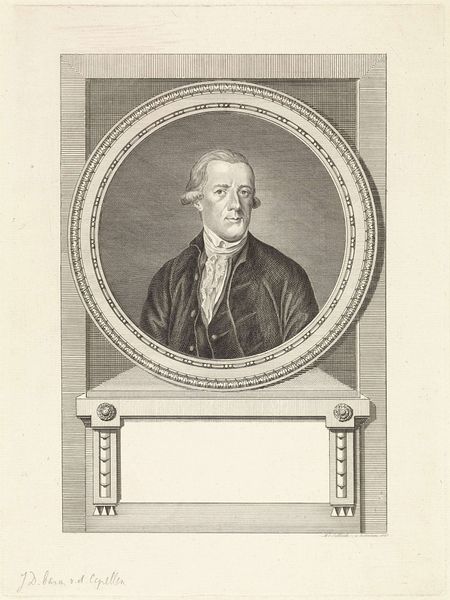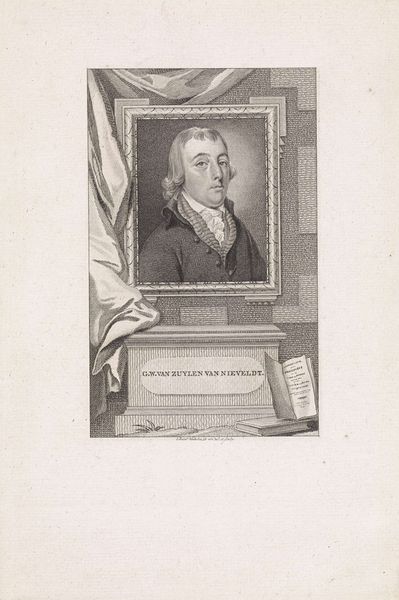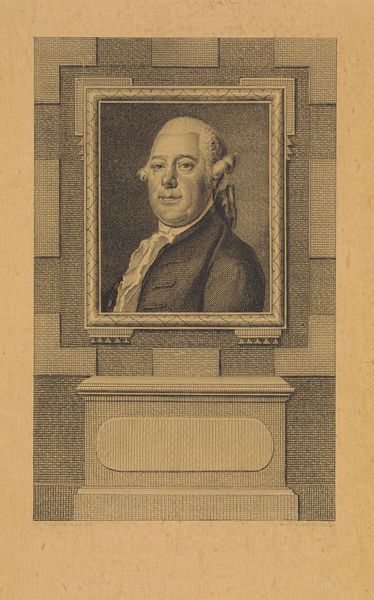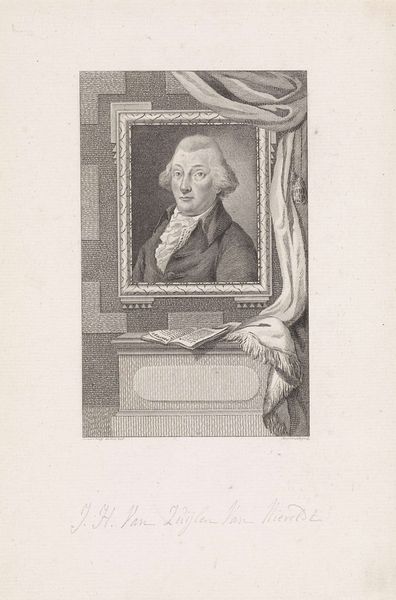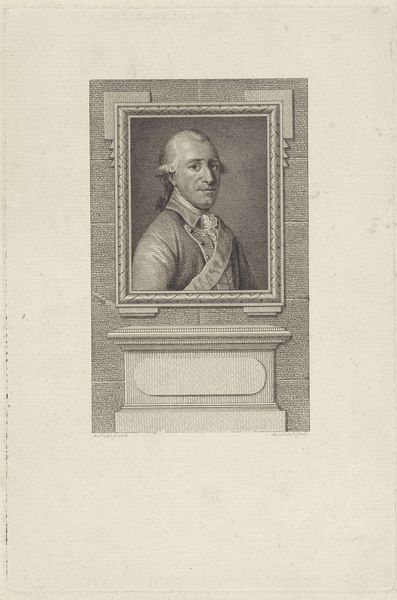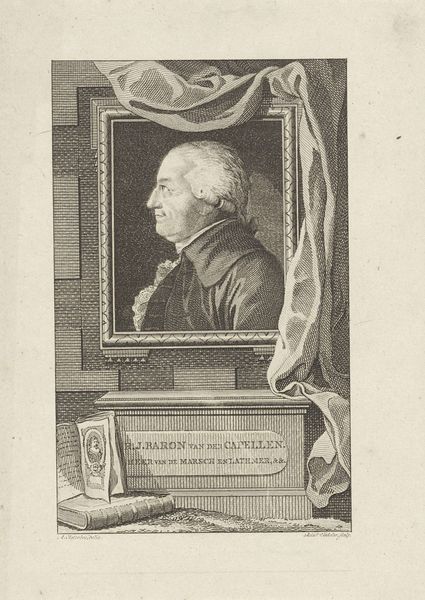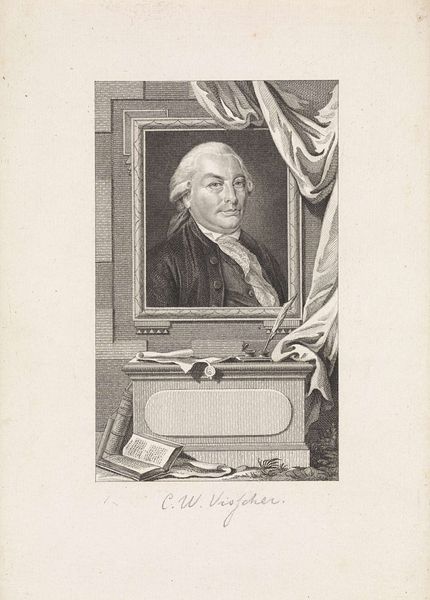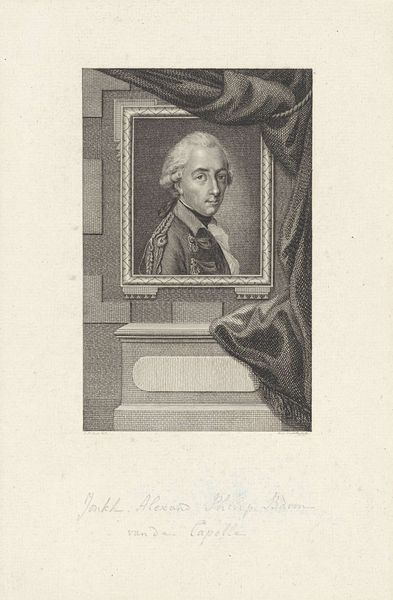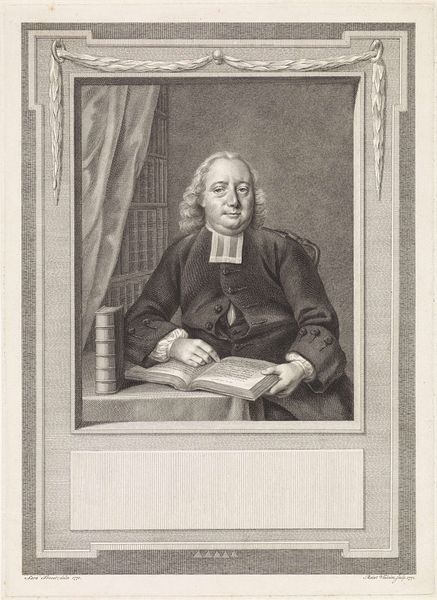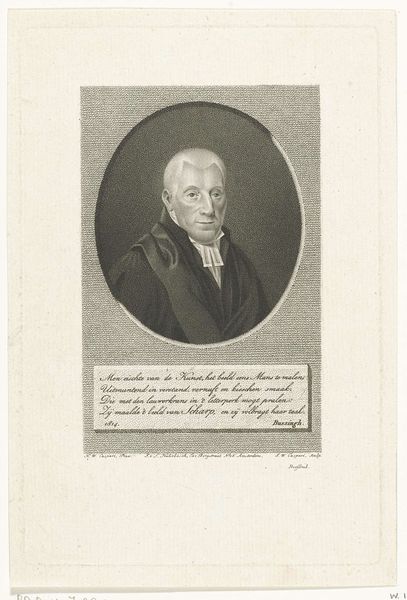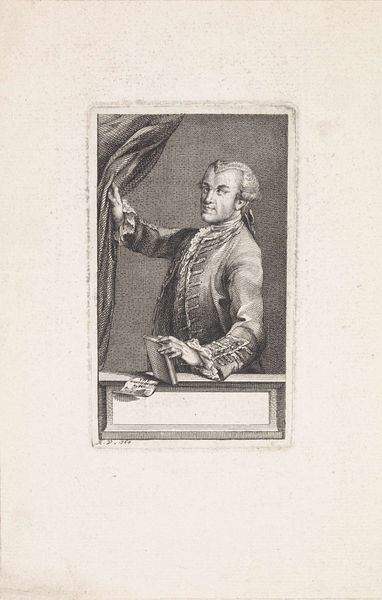
print, engraving
#
portrait
#
neoclacissism
# print
#
engraving
Dimensions: height 230 mm, width 152 mm
Copyright: Rijks Museum: Open Domain
Curator: Here we see Reinier Vinkeles’ 1786 engraving, a “Portret van Joan Derk van der Capellen tot den Pol," held at the Rijksmuseum. There’s an incredible sense of immediacy here. How does it strike you? Editor: It has an intriguing stillness, almost theatrical. The way the subject is framed—within a frame, no less, atop what appears to be a writing desk—lends it a formal, considered air, but perhaps performative too? The props are neatly arranged, hinting at purpose and intellect. Curator: Exactly! This image arrives at a moment when Van der Capellen tot den Pol was an important political figure, a progressive voice advocating for greater citizen participation in government. Consider this within the context of the Dutch Republic at this time. Editor: So, the props contribute to constructing a very specific, perhaps deliberately cultivated, public image. A scholar, a writer... an enlightened leader. It certainly begs the question of who gets to write history, literally and figuratively. Were these Neoclassical portraits meant to establish a visual language for power and privilege, echoing ideals while maintaining exclusion? Curator: Indeed, the Neoclassical style chosen intentionally evokes Republican ideals, aligning the subject with the virtues of the Roman Republic. This print functions as propaganda, designed to broadcast his image and thus, his ideas more widely. But it also invites a dialogue around the access and control of disseminating imagery to cultivate ideological power. Editor: And the layering adds so much meaning; portrait as object, subject framed, composed, perhaps to soften the harder edges of power, making him approachable, but always mediated by the paraphernalia of civic responsibility and, arguably, performance. This raises interesting questions around political identity. Curator: It makes me think of current questions on political image-making and the control of visual narratives... what traces of the self remain when it is mediated so completely? Editor: A vital consideration as we seek to decipher the layers of intention and interpretation within these historic representations. Thank you, I hadn't quite seen it that way.
Comments
No comments
Be the first to comment and join the conversation on the ultimate creative platform.
